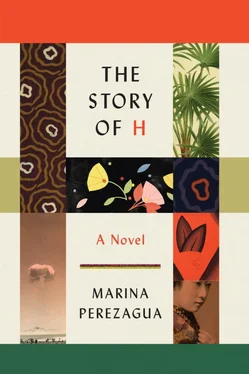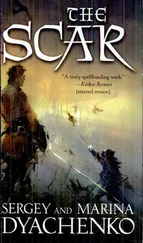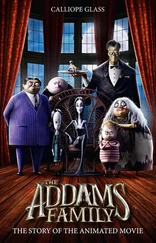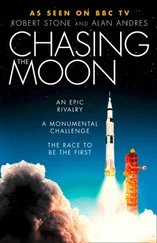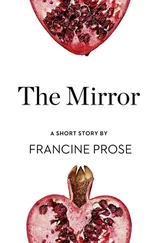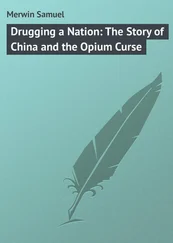She said her husband had worked in Los Alamos with Stanisław Marcin Ulam, the Polish mathematician who first presented the project in 1946, which the physicist Freeman J. Dyson went on to develop at General Atomics, the nuclear physics center in San Diego, keeping the dream alive even today, despite the naysayers. For most of the team, Orion was about salvation: how to avoid the extinction of the human race if it came to having to evacuate the planet. Then, as now, there was no means for reaching the distances needed to find habitable environments in space. So Orion was based on nuclear propulsion systems for spaceships that could outlast the fuel insufficiencies of chemical rockets and travel longer interplanetary distances. A series of atomic bombs were placed at the rear of a vessel so that the ripple effects of consecutive explosions could propel the craft into speeds reaching up to a considerable percentage of the speed of light. Taking into account that the human body cannot withstand prolonged periods of acceleration beyond 49 m/s 2, scientists calculated the number of atomic bombs it would take to reach a viable escape speed with thrust enough to punch through the earth’s gravitational field. Their conclusion was two to four bombs per second, which would initially require one thousand atomic bombs only to keep it out of orbit. Most of this information, she said, had been classified as top secret in 1959. The radioactive element strontium 90 had been found in the baby teeth of children living near the nuclear test sites, and the global population was taking a stand against the arm’s race and nuclear energy, just as Project Orion was proposing not a single bomb but thousands of them. And this led to another immeasurable danger, details of which could be found in the reports: alternative ways of producing nuclear materials on the cheap. Access to this intelligence could allow any country to produce atomic weapons en masse and cheaply. That’s why most of the project had been kept secret aside from the relatively trivial details the woman gave, which were declassified.
Then the woman offered a more personal perspective. To her, the project meant that for once the devil’s artifact that is the atomic bomb might find a positive purpose: to pluck a handful of humans away from this inhumane planet. Though she didn’t number among the select few fortunate enough to abandon Earth, it was enough to know that someone would be given the chance to start anew in some faraway place, and with time our planet would turn into that blue globe people pointed at as a symbol of well-deserved abandonment. Now that she was a recluse in a world where the only thing that didn’t look phony was death, Project Orion became the only outlet for her fantasy. Mateo de Paz, a close friend of her husband’s, would call on them from time to time; he was one of the most lucid scientists at San Diego’s General Atomics. She thought his name, de Paz (meaning peace in Spanish), was yet another beautiful reason for using the bomb as an instrument of survival and not of murder. She slept with him several times because of that name, and because it put her in touch with her Mexican origins. But it happened only after the treaty came along that shattered her dreams of evacuation, the so-called Partial Test Ban Treaty, or Treaty Banning Nuclear Weapon Tests in the Atmosphere, in Outer Space and Under Water. A long name she’d never forgotten.
Orion dwindled away after that, once they’d prohibited nuclear testing. I thought about her again when I read an article by Freeman J. Dyson in Science magazine titled “Death of a Project.” What caught my attention was how Dyson had highlighted something not typically associated with the aims of the atomic bomb: the opportunity to redeem humankind, to counterbalance what the bombs had done to Hiroshima and Nagasaki. According to my notes, he wrote:
It is perhaps wise that radical advances in technology, which may be used both for good and for evil purposes, be delayed until the human species is better organized to cope with them. But those who have worked on Project Orion cannot share this view. They must continue to hope that they may see their work bear fruit in their own lifetimes. They cannot lose sight of the dream which fired their imaginations in 1958 and sustained them through the years of struggle afterward—the dream that the bombs which killed and maimed at Hiroshima and Nagasaki may one day open the skies to mankind.
Jim and I had arrived late, but at least we had a new lead that, even if uncertain, was nevertheless better than nothing. Hope was what kept all of Yoro’s parents clutching at straws. But the best part of the visit was seeing photos of Yoro from her time with them. It allowed Jim to fill in the gaps, at least about her physical appearance. Apparently Yoro had had a difficult time adapting to them the first few months. She had missed her father. Being told as much was a precious gift for Jim, though back in the car he admitted it made him feel selfish; it would have been so much better for Yoro if she hadn’t missed him, yet he was relieved to know she remembered him. He repaid the woman’s kindness by showing her a few photos he kept in his wallet. Yoro as a newborn. Yoro at two. At three. Just before she left. Between the two of them, they composed the most current image of Yoro possible, given the circumstances.
You’ll probably have asked yourself by now, several times, why that woman considered looking for Yoro a lost cause too, why they were hiding her at all, and why at best we could track only the girl’s itinerary, but never her present location. It was like some macabre race to pick up body parts scattered over a variety of geographical locations and put them together again in the hopes of bringing Yoro back to life with the final piece, the most important one, the one it seemed we would never locate before the worms had liquefied it forever. The clues seemed valuable at the time, but now I know they were just gold-plated distractions whose bogus sparkle only sidetracked us and kept us from searching for what was essential. I’ve even suspected we were purposefully fed false leads to slow us down, to keep us distracted and thinking that our research was actually bearing fruit. But this is all speculation on my part. I could answer the other questions too, but things wouldn’t be clear for you yet, so for the time being, allow me to keep you waiting. This delay is necessary, because what you’ll have found out by the time you finish reading is so hard to explain that you’d never put the pieces together unless I dole out the information gradually, allowing meaning to collect in your consciousness over time, eventually catching fire in an instant when you finally understand what can only be comprehended over time.
SO I LEARNED JIM’S STORY slowly but surely. He too fed me the information a little at a time. I’m convinced that if he hadn’t gauged carefully what he told me about himself, I probably wouldn’t have remained at his side. I had always figured I would fall in love with someone a little less weather-beaten than me, whose ingenuousness would help ease the weight of my own life’s story. I thought if I had a preference for one type of man over another, it was the kind who had experienced little pain. So each time Jim went into his past, I would stare back silently, trying to conceal my surprise over having fallen in love with him. And I was so good at hiding my feelings that I think it would have been hard for him to identify my surprise, but still I worried that he’d realize how I felt by the expression on my face.
Sometimes an object would spur a memory and Jim would go into the details of the story. Once the object was a bicycle. Jim had always seemed to retreat into himself when he watched people riding their bikes in Central Park, enjoying a bit of exercise. One day as we were just strolling along, Jim opened up about his time working on the railway in Burma.
Читать дальше
